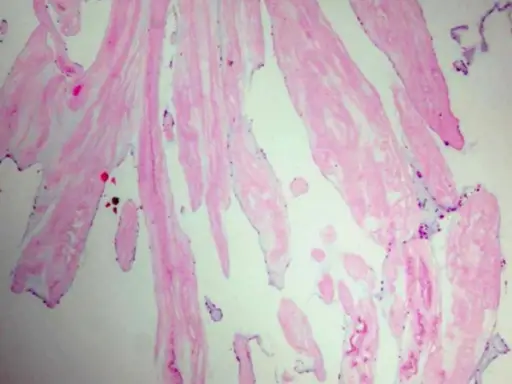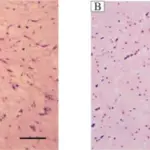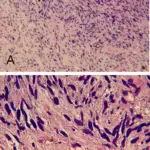Cardiac papillary fibroelastoma is the second most common cardiac tumor.
What is the Pathology of Cardiac Papillary Fibroelastoma?
The pathology of cardiac papillary fibroelastoma is:
-Etiology: The cause of cardiac papillary fibroelastoma is unknown, due to its rare occurrence.
-Pathogenesis: The sequence of events that lead to cardiac papillary fibroelastoma is hypothesized to be acquired and begin as a microthrombi which aggregates at minor endothelial damages on the valvular surface. The microthrombi becomes excrescences and then papillary fibroelastoma that can potentially lead to sudden death, stroke, and myocardial infarction.
-Histology: The histology associated with cardiac papillary fibroelastoma shows a sea-anemone like structure with a central stalk and arms projecting outward composed of collagen, elastin, and reticulin.
How does Cardiac Papillary Fibroelastoma Present?
Patients with cardiac papillary fibroelastoma typically affect male with <1% prevalence and present at a mean age of 60 years old. The symptoms, features, and clinical findings associated with cardiac papillary fibroelastoma is generally asymptomatic but can include stroke, myocardial infarction, features of heart failure, syncope or sudden death.
How is Cardiac Papillary Fibroelastoma Diagnosed?
Cardiac papillary fibroelastoma is diagnosed with an incidental finding; initial approach is with transthoracic echocardiography, transesophageal echocardiogram or during cardiac surgery and autopsy.
How is Cardiac Papillary Fibroelastoma Treated?
Cardiac papillary fibroelastoma treatment includes surgery and close monitoring.
What is the Prognosis of Cardiac Papillary Fibroelastoma?
The prognosis of cardiac papillary fibroelastoma is good following surgical procedure due to its benign process.



